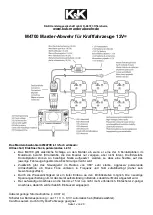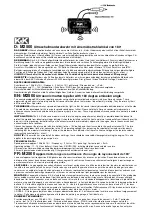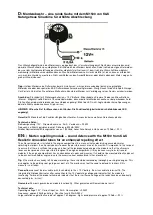
Basic Installation and Operation Guide
TE Series Digital Solid State Soft Starters 18 – 1250A
62 |
P a g e
6.4
Testing with a smaller motor
To test the
TE Series
starter in combination with a motor that draws
less than 20% of the starters Max Amp rating, the Phase Current
Loss (Running) protection must be disabled as per instructions in
section 5.6.8.a. If this feature is not disabled, the
TE Series
will trip
on a Phase Loss fault after running for 3 seconds at low current
levels. If disabled, it is recommended that Current Imbalance is
enabled.
Chapter 7 - Fault Conditions
7.1
Fault Codes and Numbers (in History)
A three-character fault code is displayed in the LED display at the time of
the trip event. The first two digits indicate the trip condition (see Table
7.1). The third digit is a suffix showing the
TE Series
operating mode
when the trip occurred. Operating modes are as follows:
Code suffix “A”:
Acceleration, meaning that the
TE Series
was ramping
up but had not yet achieved “At-Speed” status (see section 4.2.9.b for a
brief description of At-Speed indication).
Code suffix “c”:
Constant Speed (running), meaning that the
TE Series
has reached the At-Speed condition and the motor was running when the
trip occurred.
Code suffix “d”:
Decel or Stop, meaning that
TE Series
was either
stopped (off, but power applied), or if the Pump-Flex Decel function was
enabled, it was engaged in the Soft Stop routine set up by F024-27.
IMPORTANT NOTE:
Fault code SSd may display if there is no output load (motor)
connection when control power is applied!
In addition to these fault display codes, each trip condition has a
corresponding numeric code that is stored in the Fault History (see
section 5.6.12.a). The numeric codes follow the display codes exactly.
Table 7.1 shows the Fault Display Codes, Fault Number Codes and LED
indicators for each fault condition. Additional details are available in the
Service and Troubleshooting Guide.
Example:
If Function F003 (starting overload protection) is set too low
for the size of the load and causes a trip, the fault code “oLA” will be
displayed. Its corresponding number will be entered into the fault history.
In this case, the number 0010 will be shown on the display in function
F085 (Fault History). The time the fault occurred is available in function
F086 shown as “hh.mm.”Example: if the “oLA” fault occurred at 10:00
am, F086 would display “10.00.” The date the fault occurred is available
in function F087. The date is shown as “mm.dd”. If the “oLA” fault
occurred on March 1, F077 shows“03.01.” If no fault history is available
F085 reads 0000.
Buy: www.ValinOnline.com | Phone 844-385-3099 | Email: [email protected]
















































